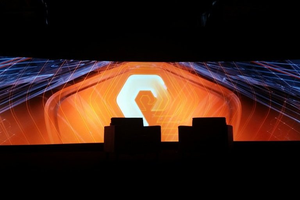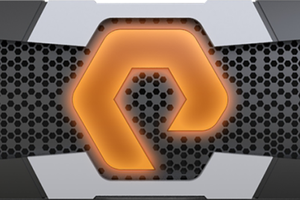SolidFire Aims To Make CapEx Great Again

SolidFire recently announced the latest iteration of its Element storage operating system — version 9, or Fluorine — but of greater interest to me is the new purchasing model it introduced. This is the first new release since SolidFire was acquired by NetApp.
Called FlashForward Capacity Licensing, it essentially decouples the software license from the hardware. Under the scheme, you buy the right to use the SolidFire OS across a pool of SolidFire storage by storage capacity, in chunks starting at 100TB. The right to use the software is for your enterprise, so you can move the physical location of storage around without having to move license keys about.
Now this isn't exactly new, despite SolidFire's breathless marketing to the contrary, because there are several software-based storage vendors who license their software based on capacity under management — off the top of my head: FalconStor's FreeStor, EMC's ScaleIO, Formation Data Systems — but they tend to be subscription based, OpEx style pricing.
What SolidFire has done is novel because of some subtle tweaks. You buy the software up-front, so you use CapEx, not OpEx, and there are still plenty of customers out there for whom CapEx is easier to justify than OpEx, despite what you might hear from over-excitable pundits. “Most larger customers really like the depreciation benefits of CapEx,” said Dave Wright, founder and CEO of SolidFire and now VP and GM of SolidFire at NetApp.
The right to use the software is perpetual, which includes upgrades to future versions for free. But it's capacity based, so you still pay more if you end up using more, and who uses less storage year-on-year? It essentially turns software into hardware that doesn't wear out, or take up space. You buy as much as you need, and then use it for as long as you need to. When you need more, you buy more.
Of course, the software needs to run on something, i.e. hardware (something waaay too many people seem to forget), which functionally means SolidFire also get money when you buy more physical capacity on which to run the software. Theoretically you could use your own (qualified and supported by SolidFire) hardware, but most customers aren't going to bother because of the hassle, and NetApp has better supply chain efficiencies in purchasing the hardware than all but the very largest purchasers anyway.
Wright mentions a service provider customer who takes six months to deploy hardware in data-centers. Ok, yes, I am also agog at that, but let's not digress. “They really don't like the fact that when they buy appliances, they're buying the software, they're buying the support, they're paying for all of this stuff for six months before it's up and delivering value,” said Wright. Instead, under this model, a customer could buy a bunch of hardware and then only buy the software when they turn on the capacity.
My favorite part is that SolidFire just made it really easy to slurp up end of budget cycle cash. “Customers can take advantage of volume discounting that's built into this program to get a lower price for purchasing ahead,” said Wright. All that “use it or lose it” money that people usually waste on kit that never gets used can now be spent on SolidFire software, with the justification that it doesn't ever expire, so it's not really ‘wasted' per se. It's inefficient because you spent money earlier than necessary (assuming you will eventually need it), but you were going to do that anyway because of the insane budget cycle weirdness. And SolidFire is cheaper if you buy in bulk now! Completely justifiable if anyone asks why you have all these unused licenses sitting around. Call it “future-proofing” or something.
SolidFire gets to profit from customers' internal budget shenanigans, which I think is hilarious.
The thing is, copying this purchase model isn't all that difficult for other vendors. It's just a matter of finding the right price to charge based on the existing cost and purchase behavior information they already have so that margins stay healthy. I won't be at all surprised to see EMC, HP, IBM, and a bunch of others copy this model for at least some of their software-heavy offerings.
Once that happens, any advantage SolidFire might have here goes away, and they'll have to find some other cheeky way to take advantage of customers' broken financial policies.
I look forward to having another good giggle at whatever they come up with.
This article first appeared in Forbes.com here.


